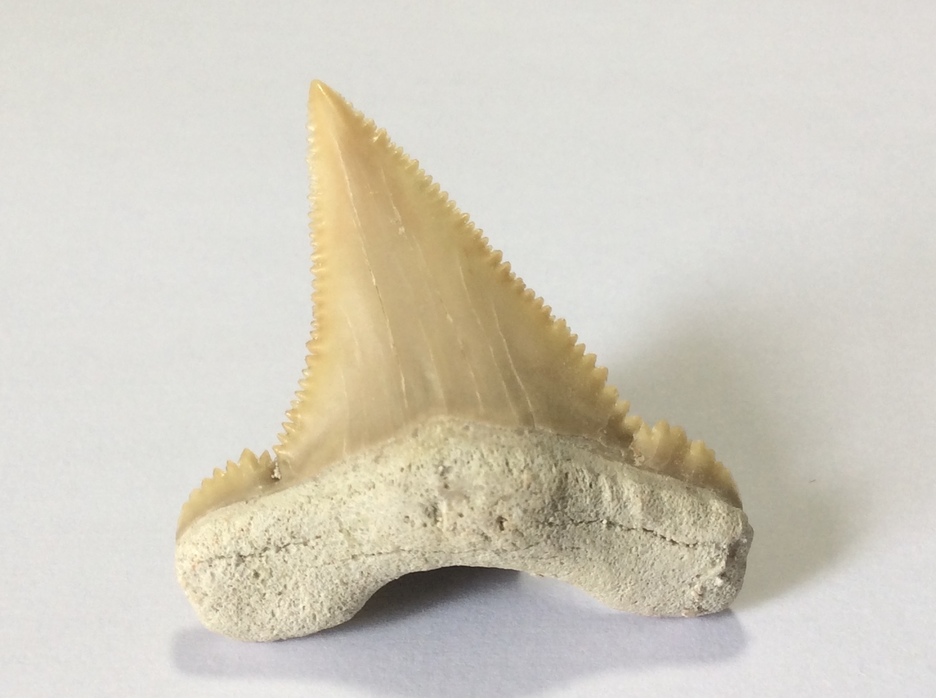BETA TEST - Fossil data and pages are very much experimental and under development. Please report any problems
 Otodontidae ✝
Otodontidae ✝
| Description | Otodontidae is an extinct family of sharks, belonging to the order Lamniformes. Its members have been described as megatoothed sharks. They lived from the Early Cretaceous to the Pliocene, and included genera such as Carcharocles and Otodus. There is the possibility that if the Carcharocles sharks derived from Otodus, then Cretolamna would belong in this group. Some species of odontids reached huge sizes, including the possible member Carcharocles megalodon. Recent studies of the newly described genus Megalolamna indicate that the members of the genus Carcharocles should be reclassified as members of the genus Otodus. From Wikipedia article at https://en.wikipedia.org/wiki/Otodontidae, which is released under the Creative Commons Attribution-Share-Alike License 3.0. | ||||||||||||||||||||||||||||||||||||||||||||||||||||||
|---|---|---|---|---|---|---|---|---|---|---|---|---|---|---|---|---|---|---|---|---|---|---|---|---|---|---|---|---|---|---|---|---|---|---|---|---|---|---|---|---|---|---|---|---|---|---|---|---|---|---|---|---|---|---|---|
| Source Data |
| ||||||||||||||||||||||||||||||||||||||||||||||||||||||
| Rank | family | ||||||||||||||||||||||||||||||||||||||||||||||||||||||
| Taxonomy (GBIF) | Life : Animalia : Chordata : Elasmobranchii : Lamniformes : Otodontidae | ||||||||||||||||||||||||||||||||||||||||||||||||||||||
| Taxonomy (PBDB) | Life : Animalia : Chordata : Chondrichthyes : Lamniformes : Otodontidae | ||||||||||||||||||||||||||||||||||||||||||||||||||||||
| Taxonomic Status (GBIF) | accepted | ||||||||||||||||||||||||||||||||||||||||||||||||||||||
| Classification (PBDB,GBIF) |
| ||||||||||||||||||||||||||||||||||||||||||||||||||||||
| Scientific Name | Otodontidae | ||||||||||||||||||||||||||||||||||||||||||||||||||||||
| Opinions (PBDB) |
| ||||||||||||||||||||||||||||||||||||||||||||||||||||||
| Status (PBDB) | extinct | ||||||||||||||||||||||||||||||||||||||||||||||||||||||
| Taxon Size (PBDB) | 29 | ||||||||||||||||||||||||||||||||||||||||||||||||||||||
| First Recorded Appearance | 113 - 94 Ma Cretaceous | ||||||||||||||||||||||||||||||||||||||||||||||||||||||
| Last Recorded Appearance | 0.13 - 0.01 Ma Pleistocene | ||||||||||||||||||||||||||||||||||||||||||||||||||||||
| Environment | marine (based on Vertebrata) | ||||||||||||||||||||||||||||||||||||||||||||||||||||||
| Motility | actively mobile (based on Lamniformes) | ||||||||||||||||||||||||||||||||||||||||||||||||||||||
| Diet | carnivore (based on Lamniformes) | ||||||||||||||||||||||||||||||||||||||||||||||||||||||
| Taphonomy | phosphatic (based on Vertebrata) | ||||||||||||||||||||||||||||||||||||||||||||||||||||||
| Primary Reference (PBDB) | A. M. Cvancara and J. W. Hoganson. 1993. Vertebrates of the Cannonball Formation (Paleocene) in North and South Dakota. Journal of Vertebrate Paleontology 13(1):1-23 | ||||||||||||||||||||||||||||||||||||||||||||||||||||||
| Wikipedia | https://en.wikipedia.org/wiki/Otodontidae |
External Images
Fossil Distribution
Subtaxa
| Name | Status | Common Name(s) | Fossil Occurrences | Oldest | Youngest |
|---|---|---|---|---|---|
genus | accepted (GBIF) listed (PBDB) | 9 | 113 Ma Early/Lower Cretaceous | 83.5 Ma Late/Upper Cretaceous | |
genus | accepted (GBIF) listed (PBDB) | 2 | 113 Ma Early/Lower Cretaceous | 105 Ma Early/Lower Cretaceous | |
genus | listed (PBDB) | 6 | 28.4 Ma Oligocene | 20.4 Ma Miocene | |
genus | listed (PBDB) | 1 | 23.0 Ma Miocene | 23.0 Ma Miocene | |
genus | accepted (GBIF) listed (PBDB) | 395 | 83.6 Ma Late/Upper Cretaceous | 3.60 Ma Pliocene | |
genus | listed (PBDB) | 5 | 66.0 Ma Late/Upper Cretaceous | 56.0 Ma Paleocene | |
genus | listed (PBDB) | 24 | 33.9 Ma Oligocene | 0.13 Ma Pleistocene |
Synonymy List
| Year | Name and Author |
|---|---|
| 1975 | Otodontidae Herman p. 166 |
| 1993 | Otodontidae Cvancara and Hoganson p. 9 |
| 2003 | Otodontidae Antunes and Balbino p. 144 |
| 2009 | Otodontidae Cicimurri and Knight p. 631 |
| 2016 | Otodontidae Boessenecker p. 3 |
| 2017 | Otodontidae Szabo et al. |
| 2018 | Otodontidae Kent p. 80 |
| 2019 | Otodontidae Ebersole et al. p. 26 |
References
Data courtesy of: PBDB: The Paleobiology Database, Creative Commons CC-BY licenced. , GBIF: the Global Biodiversity Information Facility, various licences, iDigBio, various licences, and EOL: The Encyclopedia of Life (Open Data Public Domain). Because fossils are made of minerals too!










Khouribga Province, Béni Mellal-Khénifra Region, Morocco